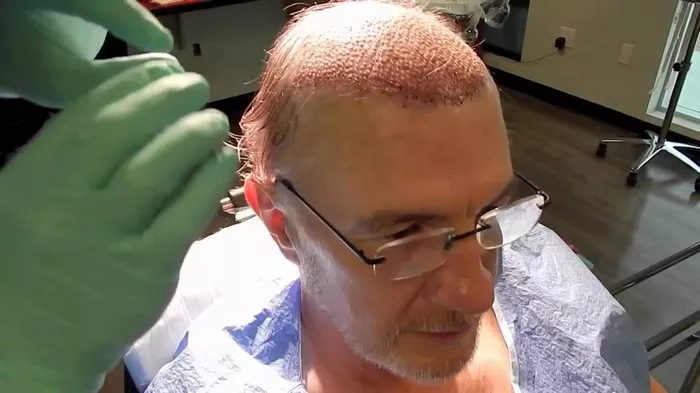In today’s fast-paced world, appearances matter more than ever, and for many individuals facing hair loss, a full hair transplant is an attractive solution. However, before embarking on this journey to restore your hairline and confidence, it’s essential to understand the costs involved. In this comprehensive article, we will explore the factors influencing the cost of a full hair transplant, how to budget for the procedure, and tips to ensure you make an informed decision.
Understanding the Factors Affecting Hair Transplant Costs
The cost of a full hair transplant can vary significantly depending on several key factors. To help you get a clearer picture, let’s break them down:
1. Type of Procedure
Hair transplant procedures come in various forms, including Follicular Unit Extraction (FUE) and Follicular Unit Transplantation (FUT). FUE is generally more expensive due to its minimally invasive nature and precision.
2. Number of Grafts Needed
The extent of your hair loss will determine the number of grafts required. The more grafts needed, the higher the cost of the procedure.
3. Surgeon’s Expertise
An experienced and reputable surgeon may charge a premium for their skills. However, their expertise can yield more successful, natural-looking results.
4. Location
The geographical location of the clinic plays a significant role. Major cities and affluent areas often have higher costs for medical procedures, including hair transplants.
5. Clinic Facilities
The quality of the clinic’s facilities and the use of advanced technology can influence the cost. State-of-the-art equipment and a comfortable environment may result in a higher price.
The Breakdown: Cost Components
Now that you have an overview of the factors affecting the cost, let’s dive deeper into each component:
1. Type of Procedure
FUE vs. FUT: Follicular Unit Extraction (FUE) is the modern technique of individually extracting grafts, making it more labor-intensive. This method can cost around $5 to $15 per graft. On the other hand, Follicular Unit Transplantation (FUT) involves removing a strip of scalp and dissecting it into grafts. FUT can cost between $4 and $10 per graft. The choice between these techniques impacts the overall price of your hair transplant.
2. Number of Grafts Needed
The number of grafts required is directly linked to the extent of your hair loss and the area you want to cover. Typically, the cost is calculated per graft. On average, patients might need anywhere from 1,000 to 4,000 grafts, with each graft costing between $4 to $15. It’s essential to have a thorough consultation with your surgeon to determine your specific needs.
3. Surgeon’s Expertise
The skills and reputation of your surgeon can significantly impact the cost. Highly experienced surgeons with a track record of successful procedures may charge more. It’s crucial to find a balance between cost and quality when selecting your surgeon.
4. Location
The cost of a full hair transplant varies by location. In urban areas and high-cost-of-living regions, prices tend to be higher due to increased overhead expenses. For example, a hair transplant in New York City is likely to cost more than in a smaller town.
5. Clinic Facilities
A modern, well-equipped clinic may charge higher fees due to the cost of maintaining state-of-the-art facilities. However, the comfort and technology provided can enhance your overall experience and satisfaction.
Budgeting for Your Hair Transplant
Now that you’re aware of the cost components, it’s time to create a realistic budget for your hair transplant:
1. Consultation and Evaluation
Start by scheduling consultations with reputable surgeons to determine the extent of your hair loss and the number of grafts required. These consultations are often free or available at a nominal fee.
2. Research Financing Options
Many clinics offer financing plans, allowing you to spread the cost over time. Check if your chosen clinic provides such options and evaluate their terms carefully.
3. Consider All-Inclusive Packages
Some clinics offer all-inclusive packages, which cover the procedure, post-operative care, and medications. These packages can provide cost savings compared to paying for each component separately.
Tips for Making an Informed Decision
Choosing to undergo a full hair transplant is a significant decision. To ensure you make an informed choice, consider the following tips:
1. Research Thoroughly
Look for reviews, testimonials, and before-and-after photos to gauge the quality of work done by potential surgeons and clinics.
2. Ask Questions
Don’t hesitate to ask your surgeon questions about their experience, the procedure, and what to expect during recovery.
3. Discuss Your Goals
Be clear about your goals and expectations. A skilled surgeon will provide realistic guidance on what can be achieved through the procedure.
4. Consider Long-Term Costs
Remember that a hair transplant is a long-term investment. While the initial cost may seem high, it can save you money on hair loss treatments and products in the future.
See Also: After Hair Transplant: Does Hair Grow Back in the Donor Area?
In conclusion
The cost of a full hair transplant can vary significantly based on the type of procedure, the number of grafts needed, the surgeon’s expertise, location, and clinic facilities. To make the best decision for your hair restoration journey, budget carefully, research thoroughly, and consider all the factors mentioned. Ultimately, investing in a quality hair transplant can lead to a boost in confidence and a more satisfying self-image, making it a worthwhile endeavor.


